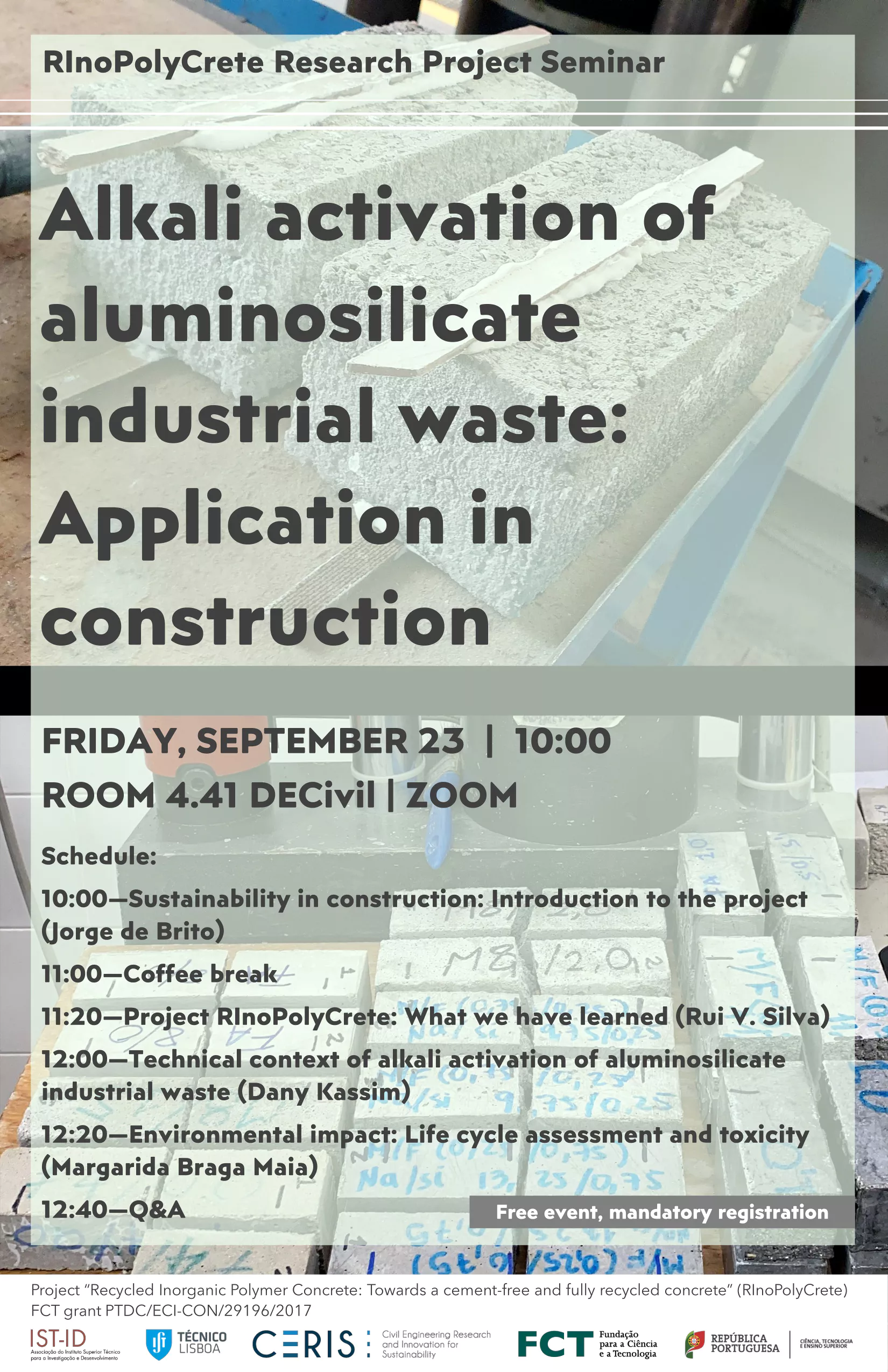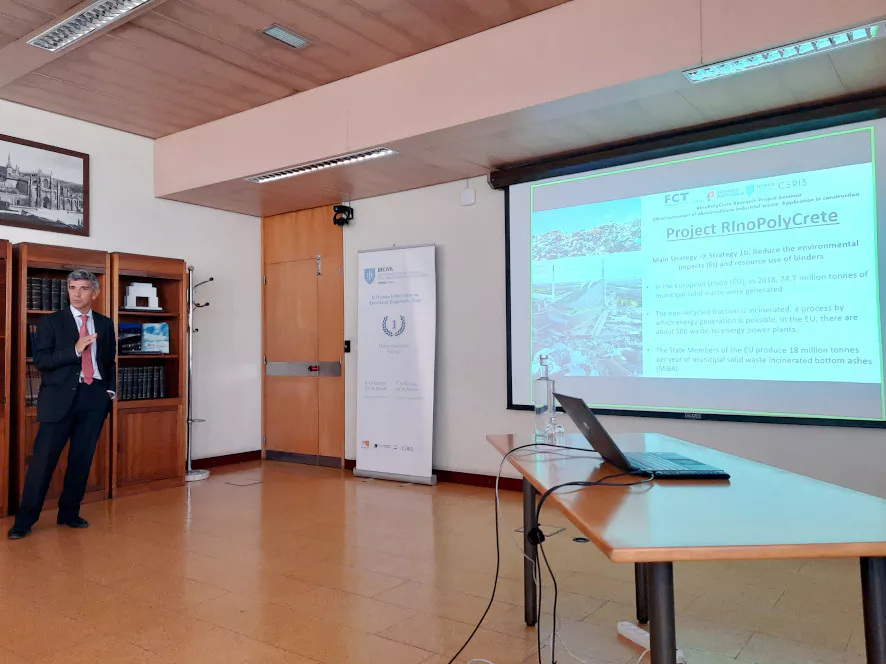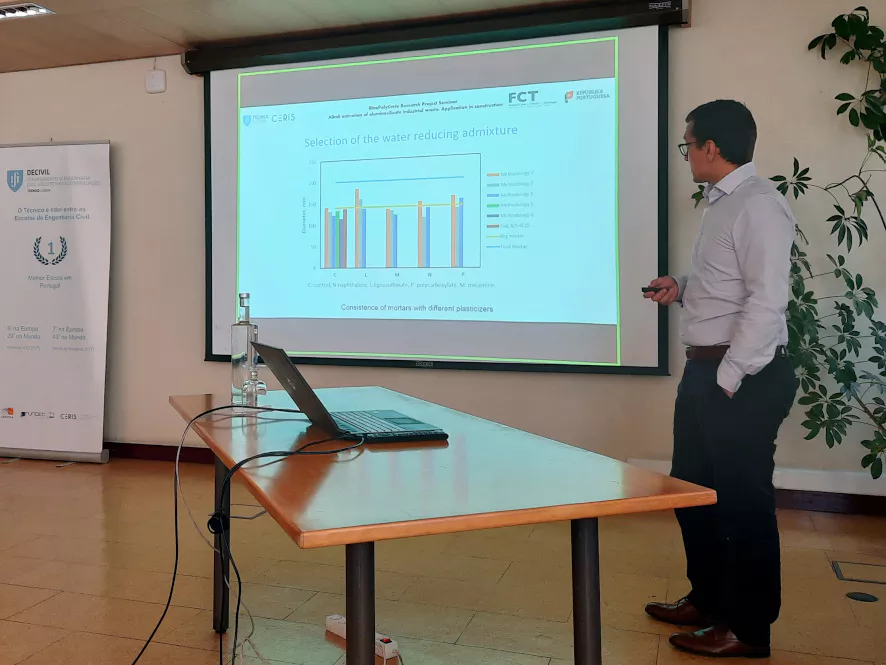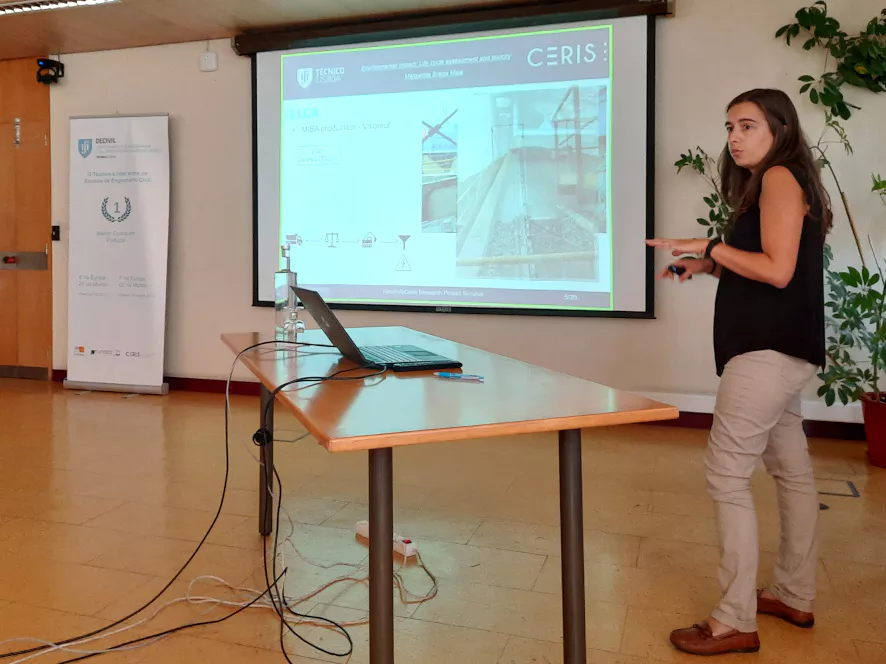Seminar overview
In the context of the RInoPolyCrete research project (Recycled Inorganic Polymer Concrete: Towards a cement-free and fully recycled concrete), on September 23, 2022, between 10 a.m. and 1 p.m., a seminar took place about the alkali activation of aluminosilicate industrial waste and its application in construction.
The event was divulged through the CERIS mailing list and the invitation was extended to some companies that supplied some of the materials for the experimental campaigns. An audience of about 10 in-person attendees and 10 online attendees was present.
The final schedule of the event is presented below.

Seminar details
Prof. Jorge de Brito made the first presentation. A broad context for the RInoPolyCrete project was presented, considering several options to boost the sustainability of concrete. The path followed by the RInoPolyCrete project consists of using non-conventional materials that have the potential to replace conventional binders.

Next, Dr Rui Silva made a deeper introduction to the RInoPolyCrete project and took the audience on a journey through the issues that had to be solved as the project progressed. The experimental campaigns of four Master’s Students and one PhD student were briefly presented.

Dany Kassim, a PhD student and fellow of the project, presented the experimental campaigns he was involved in, namely related to the use of electric arc furnace slag, as well as a campaign associated with the rheology of the materials and the use of different types of superplasticizers.

Finally, Margarida Braga Maia, a PhD student and a member of the project, presented the results of the Life Cycle Assessment of the municipal solid waste bottom ashes (MIBA), considering the different stages it goes through, including the alkali activation. Additionally, Margarida also presented the chemical and toxicity laboratory results of unbound and bound MIBA.

In the end, some members of the audience asked questions to the speakers, mostly referring to future developments in the project’s line of research.

